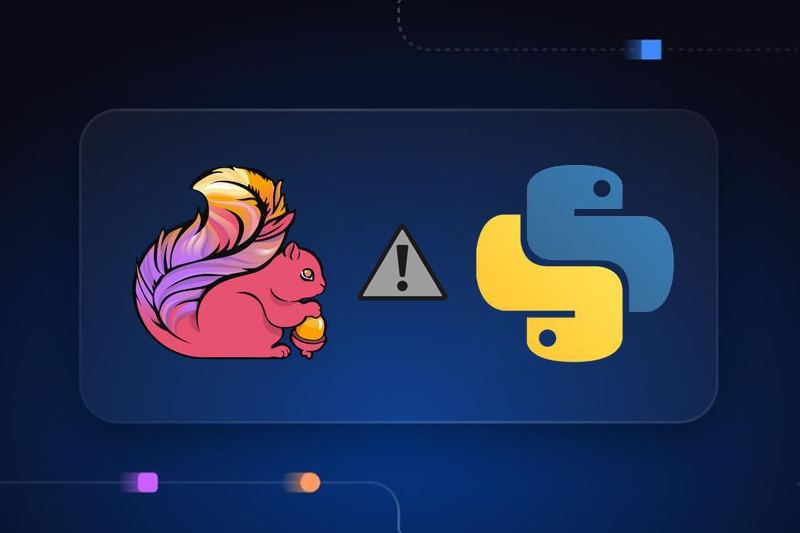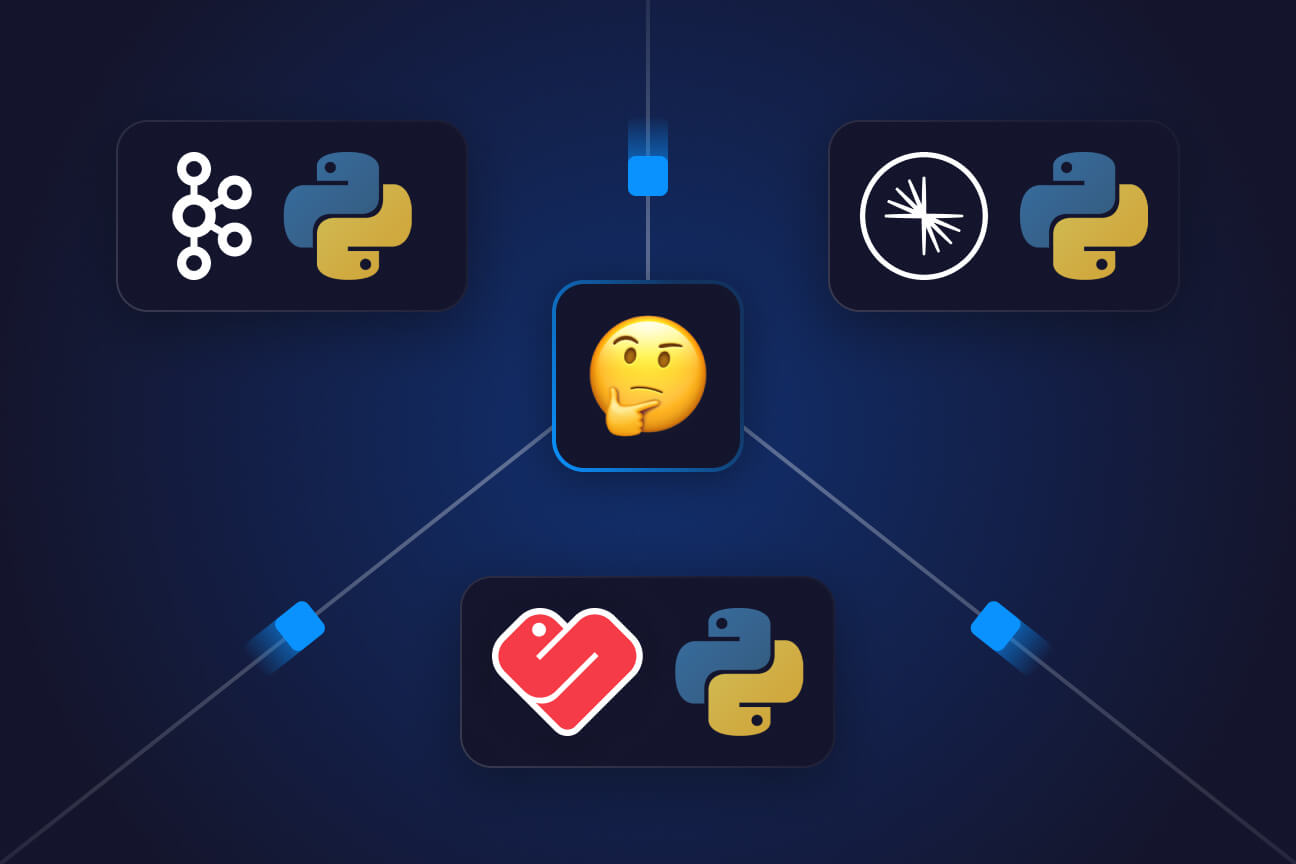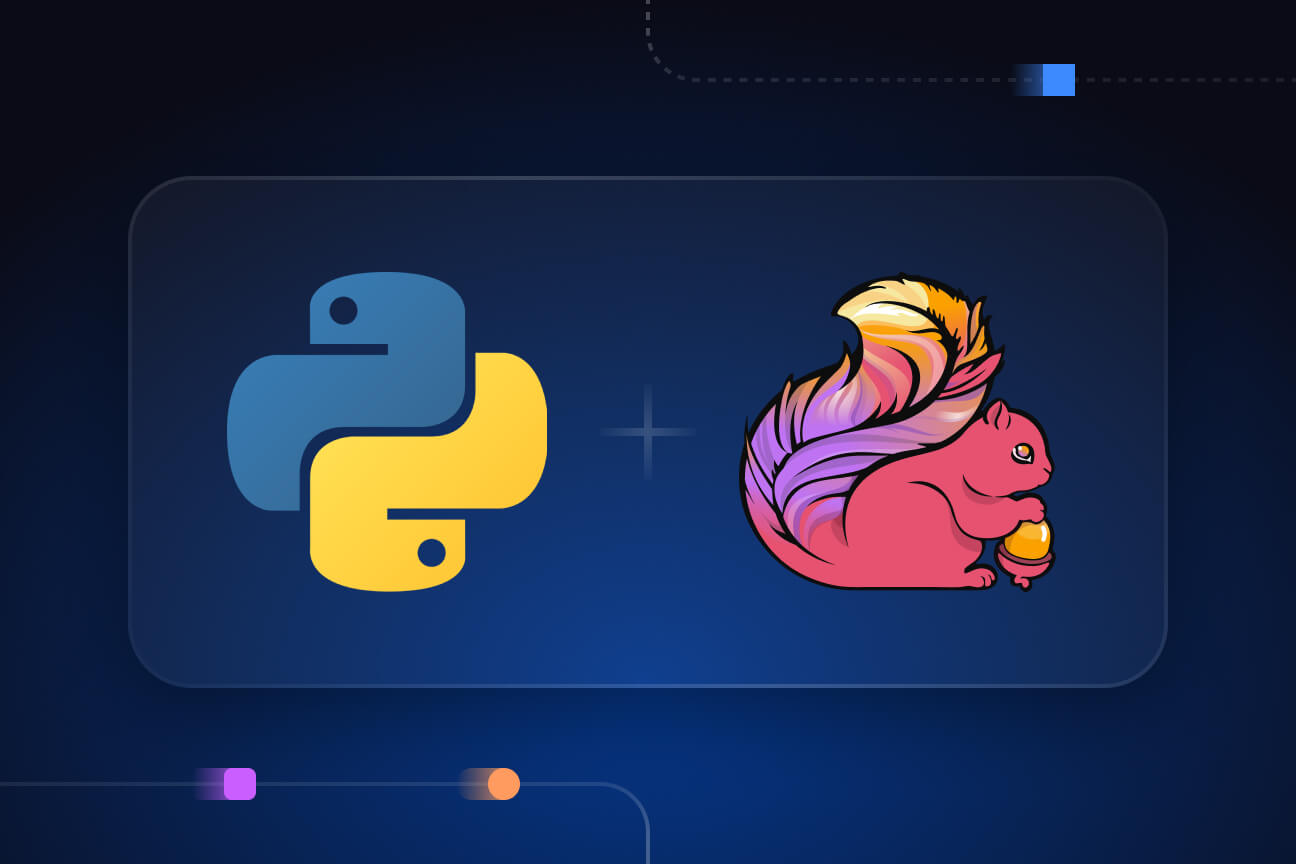The Quix blog

Ecosystem
July 9, 2024
How to fix common issues when using Spark Structured Streaming with PySpark and Kafka
A look at five common issues you might face when working with Structured Streaming, PySpark, and Kafka, along with practical steps to help you overcome them.

Ecosystem
June 6, 2024
Quix Streams—a reliable Faust alternative for Python stream processing
A detailed comparison between Faust and Quix Streams covering criteria like performance, coding experience, features, integrations, and product maturity.

Ecosystem
May 23, 2024
Debugging PyFlink import issues
Solutions to a common issue that Python developers face when setting up PyFlink to handle real-time data.

Ecosystem
May 16, 2024
Choosing a Python Kafka client: A comparative analysis
Assessing Python clients for Kafka: kafka-python, Confluent, and Quix Streams. Learn how they compare in terms of DevEx, broker compatibility, and performance.

Ecosystem
May 1, 2024
PyFlink — A deep dive into Flink’s Python API
Learn how to use PyFlink for data processing workloads, read about its architecture, and discover its strengths and limitations.

Ecosystem
February 28, 2024
Understanding Kafka’s auto offset reset configuration: Use cases and pitfalls
The auto.offset.reset configuration defines how Kafka consumers should behave when no initial committed offsets are available for the partitions assigned to them. Learn how to work with this configuration and discover its related challenges.

Ecosystem
February 19, 2024
Kafka vs Spark - a comparison of stream processing tools
This comparison specifically focuses on Kafka and Spark's streaming extensions — Kafka Streams and Spark Structured Streaming. Kafka Streams excels in per-record processing with a focus on low latency, while Spark Structured Streaming stands out with its built-in support for complex data processing tasks, including advanced analytics, machine learning and graph processing.

Ecosystem
November 13, 2023
Fargate vs Lambda: a comparison of serverless technologies
The main difference between these two serverless compute platforms is that AWS Fargate takes care of the underlying VMs, networking, and other resources you need to run containers using ECS or EKS, whereas AWS Lambda lets you run standalone, stateless functions without having to consider any of the infrastructure whatsoever.

Ecosystem
November 6, 2023
Amazon ECS vs. EKS. vs. Fargate: a comparison of container management services
The main difference between them? ECS and EKS are container orchestration services for Docker and Kubernetes that simplify the deployment, management, and scaling of containerized apps. Meanwhile, Fargate is a serverless compute engine that works with both ECS and EKS, removing the need to manage underlying server infrastructure.

Ecosystem
October 2, 2023
Redpanda vs. Kafka: comparing architectures, capabilities, and performance
The main difference between them? Kafka is an established Java-based data streaming platform, with a large community and a robust ecosystem. Meanwhile, Redpanda is an emerging, Kafka-compatible tech written in C++, with an architecture designed for high performance and simplicity.

Ecosystem
September 27, 2023
ActiveMQ vs. Kafka: A comparison of differences and use cases
We explore the differences between Kafka and ActiveMQ, and which use cases each are best suited to.

Ecosystem
September 19, 2023
Apache Kafka vs. RabbitMQ: Comparing architectures, capabilities, and use cases
The main difference between them is that Kafka is an event streaming platform designed to ingest and process massive amounts of data, while RabbitMQ is a general-purpose message broker that supports flexible messaging patterns, multiple protocols, and complex routing.

Ecosystem
August 29, 2023
Apache Beam vs. Apache Spark: Big data processing solutions compared
The main difference between Spark and Beam is that the former enables you to both write and run data processing pipelines, while the latter allows you to write data processing pipelines, and then run them on various external execution environments (runners). But what are the other differences between Spark and Beam, and how are they similar?

Ecosystem
July 19, 2023
Kafka vs Pulsar: Streaming data platforms compared
An in-depth comparison of Apache Kafka and Pulsar, covering criteria such as architectural differences, operational attributes, developer experience, ecosystems, deployment options, and security.

Ecosystem
July 18, 2023
Accelerating AI-ready application development: Quix and Confluent partnership
Teams can now build AI applications on Confluent’s data in motion, with Quix, the AI-ready event streaming application framework.

Ecosystem
July 18, 2023
Unlocking new use cases: Quix and Confluent partnership
Explore the AI applications that you can build when connecting Quix with Confluent.

Ecosystem
May 31, 2023
Apache Kafka vs Apache Flink: friends or rivals?
Explore the unique features and limitations of Apache Kafka and Apache Flink and learn how these open source streaming titans can either join forces or operate independently.

Ecosystem
May 24, 2023
The drawbacks of ksqlDB in machine learning workflows
Using ksqlDB for real-time feature transformations isn't as easy as it looks. I revisit the strategy to democratize stream processing and examine what's still missing.
